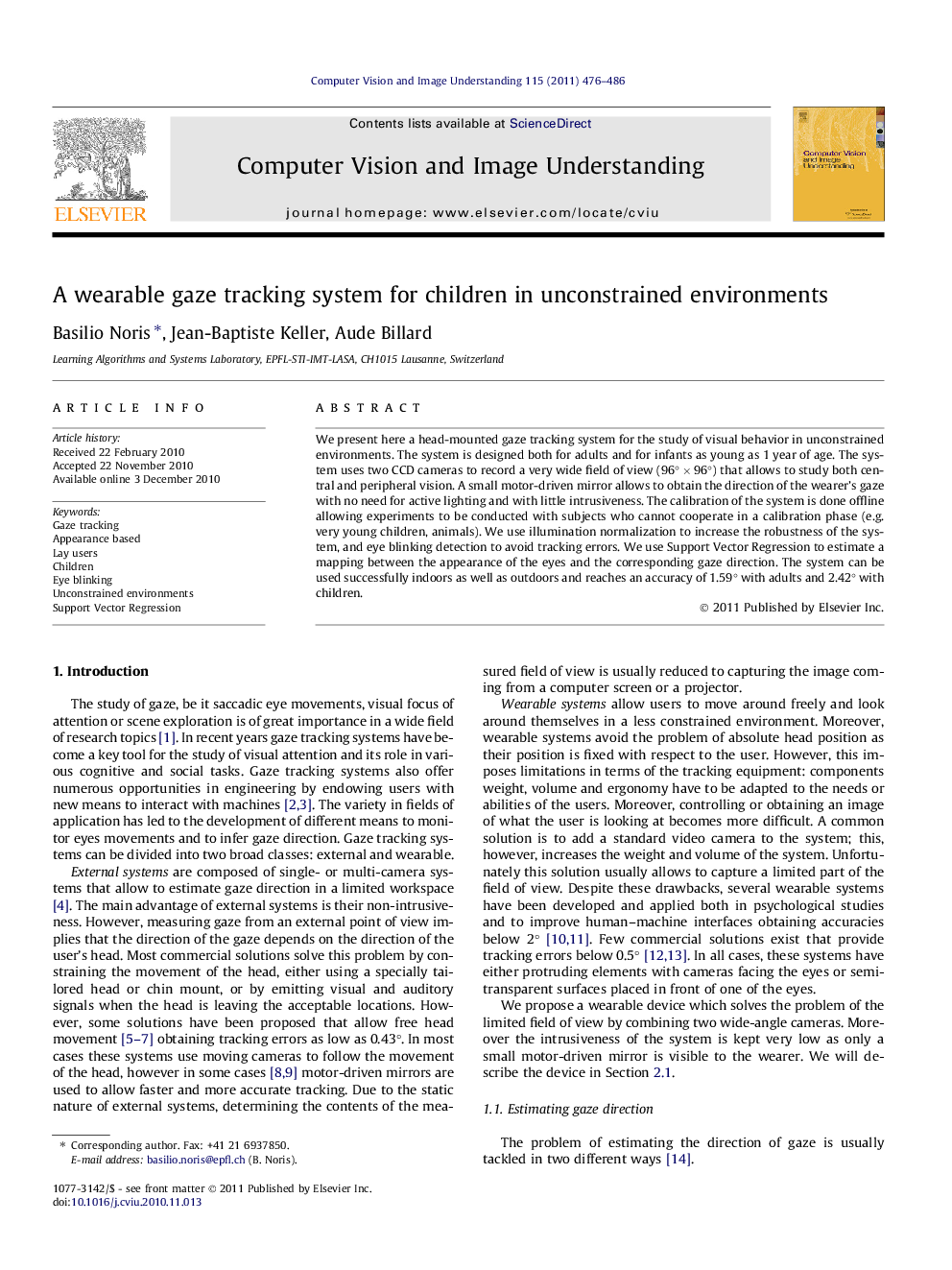| Article ID | Journal | Published Year | Pages | File Type |
|---|---|---|---|---|
| 526179 | Computer Vision and Image Understanding | 2011 | 11 Pages |
We present here a head-mounted gaze tracking system for the study of visual behavior in unconstrained environments. The system is designed both for adults and for infants as young as 1 year of age. The system uses two CCD cameras to record a very wide field of view (96° × 96°) that allows to study both central and peripheral vision. A small motor-driven mirror allows to obtain the direction of the wearer’s gaze with no need for active lighting and with little intrusiveness. The calibration of the system is done offline allowing experiments to be conducted with subjects who cannot cooperate in a calibration phase (e.g. very young children, animals). We use illumination normalization to increase the robustness of the system, and eye blinking detection to avoid tracking errors. We use Support Vector Regression to estimate a mapping between the appearance of the eyes and the corresponding gaze direction. The system can be used successfully indoors as well as outdoors and reaches an accuracy of 1.59° with adults and 2.42° with children.
Research highlights► We perform eye-tracking from a head-mounted device designed for children. ► We use Support Vector Regression to map eye-image pixels to gaze coordinates. ► Passive lighting allows tracking on very wide field of view (96° × 96°). ► Tracking accuracy is higher for adults (1.59°) than for children (2.42°).
